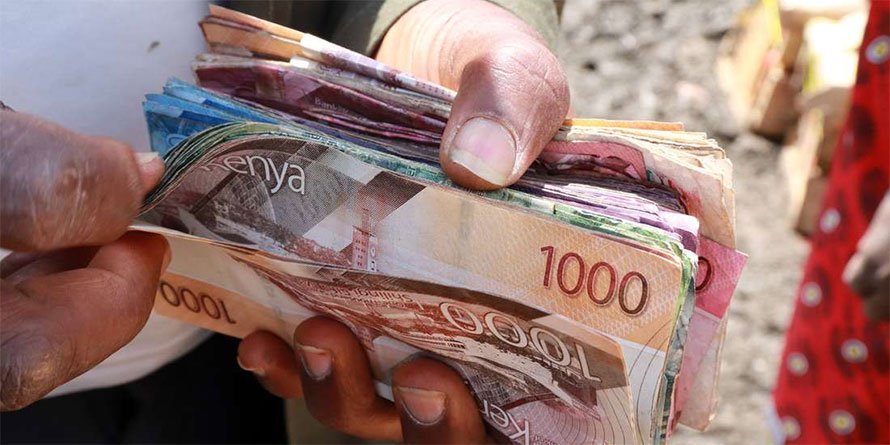Money Market Funds (MMFs) have become a popular investment vehicle for those seeking stability, liquidity, and modest returns. However, with the plethora of options available in the market, choosing the right Money Market Fund can be daunting. To make an informed decision, investors need to compare funds based on specific metrics that reflect their performance, risk, and overall value. This article delves into the key metrics to consider when comparing Money Market Funds, providing a comprehensive guide to help you select the best fund for your financial goals.
1. Understanding the Basics of Money Market Funds
Before diving into the metrics, it’s essential to understand what Money Market Funds are and why they are a preferred investment option for many. MMFs invest in short-term, high-quality debt instruments such as Treasury bills, commercial paper, and certificates of deposit. They aim to offer a safe place to invest cash-equivalent assets while providing a slightly higher return than a typical savings account. The primary goals of MMFs are capital preservation and liquidity, making them ideal for risk-averse investors.
Key Points:
- MMFs invest in short-term, high-quality debt instruments.
- Primary goals include capital preservation and liquidity.
- Slightly higher returns than savings accounts make MMFs attractive.
2. Net Asset Value (NAV) Stability
The Net Asset Value (NAV) of a Money Market Fund is one of the first metrics to consider. NAV represents the per-share value of the fund’s assets minus liabilities. For MMFs, NAV is typically maintained at a stable value of Ksh 1.00, ensuring that investors do not lose principal value. However, it’s crucial to monitor any fluctuations in NAV, as even slight changes can indicate underlying risks in the fund’s portfolio. A consistently stable NAV is a sign of a well-managed Money Market Fund.
Key Points:
- NAV represents the per-share value of the fund.
- Stability of NAV is crucial for preserving principal.
- Monitor fluctuations to assess the underlying risk.
3. Yield and Return on Investment (ROI)
The yield or ROI is perhaps the most critical metric for investors comparing Money Market Funds. Yield refers to the income generated by the fund, typically expressed as an annual percentage. It’s important to compare the yields of different MMFs to determine which one offers the best return relative to the level of risk. However, investors should be cautious of unusually high yields, as they may indicate higher risk in the fund’s underlying assets. Consistent, competitive yields are generally a good sign of a reliable MMF.
Key Points:
- Yield is a critical metric indicating the fund’s income.
- Compare yields across funds to find the best return.
- High yields may signal higher risk; consistent yields are preferable.
4. Expense Ratio
The expense ratio is the annual fee that all funds charge their shareholders to cover the fund’s operating expenses. This fee is deducted from the fund’s assets, directly affecting the overall return on investment. When comparing Money Market Funds, it’s essential to consider the expense ratio, as a lower expense ratio means more of your investment returns go into your pocket. Funds with low expense ratios are generally more attractive, as they reduce the cost of investing and improve net returns.
Key Points:
- Expense ratio represents the annual fee charged by the fund.
- Lower expense ratios mean higher net returns for investors.
- Compare expense ratios to evaluate the cost-effectiveness of MMFs.
5. Liquidity and Redemption Terms
Liquidity is a hallmark of Money Market Funds, and it’s crucial to ensure that the fund you choose offers easy access to your money. Check the fund’s redemption terms, including how quickly you can withdraw your money and any potential penalties for early withdrawals. Some funds may impose minimum holding periods or fees for redemptions within a certain timeframe. A fund that offers daily liquidity without penalties is ideal for investors seeking flexibility.
Key Points:
- Liquidity is key for Money Market Funds.
- Redemption terms should allow easy access to your funds.
- Check for penalties or restrictions on withdrawals.
6. Credit Quality of the Underlying Assets
The credit quality of the assets within a Money Market Fund’s portfolio is a crucial factor in assessing its risk. Funds that invest in high-quality, short-term debt instruments from reputable issuers are less likely to experience defaults, making them safer for investors. When comparing MMFs, look for those that prioritize investment in government securities or top-rated corporate paper. Higher credit quality usually translates to lower risk, although it may also result in slightly lower yields.
Key Points:
- Credit quality of underlying assets affects fund risk.
- High-quality debt reduces the likelihood of defaults.
- Government securities and top-rated corporate paper are preferable.
7. Fund Manager’s Experience and Track Record
The experience and track record of the fund manager are significant indicators of a Money Market Fund’s potential performance. A fund managed by a seasoned team with a history of navigating different market conditions is likely to be more resilient and deliver consistent returns. When comparing funds, research the fund manager’s background, their experience in managing similar funds, and their past performance. A strong track record is a good sign of competent management and sound investment strategies.
Key Points:
- Fund manager’s experience influences fund performance.
- Track record provides insight into management’s ability to navigate markets.
- Research the fund manager’s background before investing.
8. Fund Size and AUM (Assets Under Management)
The size of the Money Market Fund, as measured by its Assets Under Management (AUM), can provide insights into its stability and operational efficiency. Larger funds often benefit from economies of scale, which can lead to lower expense ratios and more efficient operations. Additionally, funds with substantial AUM are less likely to experience liquidity issues during times of market stress. However, it’s also important to consider that very large funds may be less nimble in responding to market changes.
Key Points:
- AUM indicates the size of the fund and its stability.
- Larger funds benefit from economies of scale.
- Consider the fund size in relation to its ability to respond to market changes.
9. Historical Performance
While past performance is not necessarily indicative of future results, it’s still an important metric to consider when comparing Money Market Funds. Reviewing a fund’s historical performance over different market conditions can provide insights into its resilience and consistency. Look for funds that have demonstrated stability and delivered positive returns during both bullish and bearish market periods. Consistent historical performance is a good indicator of a well-managed fund.
Key Points:
- Historical performance provides insight into fund stability.
- Review performance across different market conditions.
- Consistency in returns is a key indicator of a reliable MMF.
10. Risk-Adjusted Returns
Finally, it’s essential to consider risk-adjusted returns when comparing Money Market Funds. This metric evaluates the return you receive for the level of risk you’re taking on with your investment. A fund that offers higher returns but also comes with higher risk may not be as attractive as one with moderate returns and lower risk. Tools like the Sharpe Ratio can help assess the risk-adjusted returns, allowing you to choose a fund that offers the best balance of risk and reward.
Key Points:
- Risk-adjusted returns measure the return relative to risk.
- Higher risk may not always justify higher returns.
- Tools like Sharpe Ratio can help evaluate risk-adjusted returns.
Conclusion: Making an Informed Decision
Comparing Money Market Funds requires a thorough understanding of the key metrics that reflect their performance, cost, and risk. By carefully evaluating factors such as NAV stability, yield, expense ratio, liquidity, credit quality, and the experience of the fund manager, you can make a more informed decision that aligns with your financial goals. Remember, the best Money Market Fund for you is one that offers a balance of safety, liquidity, and return, tailored to your risk tolerance and investment horizon.





